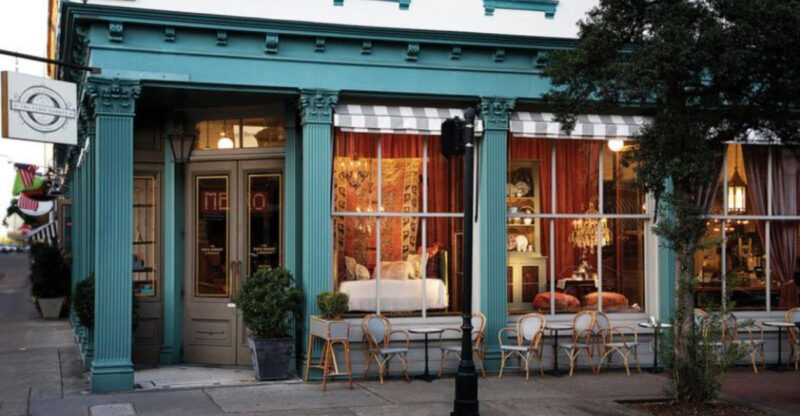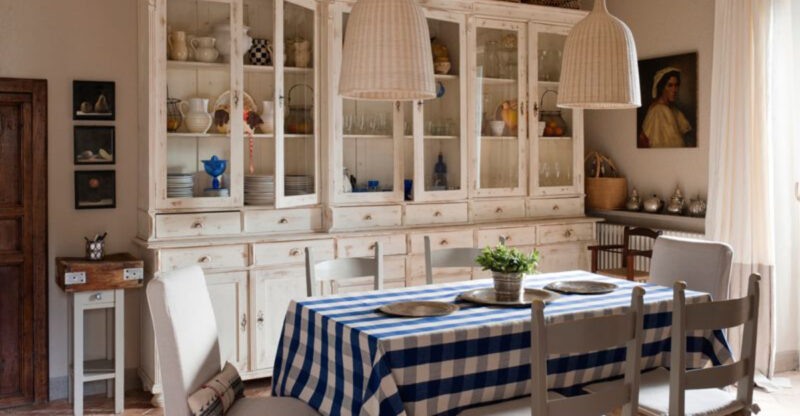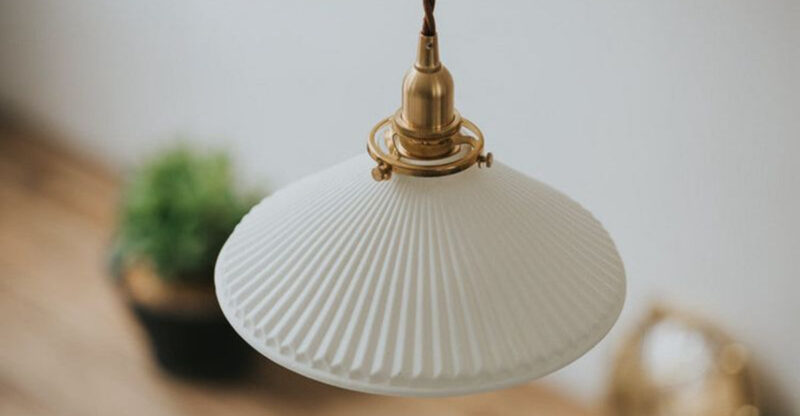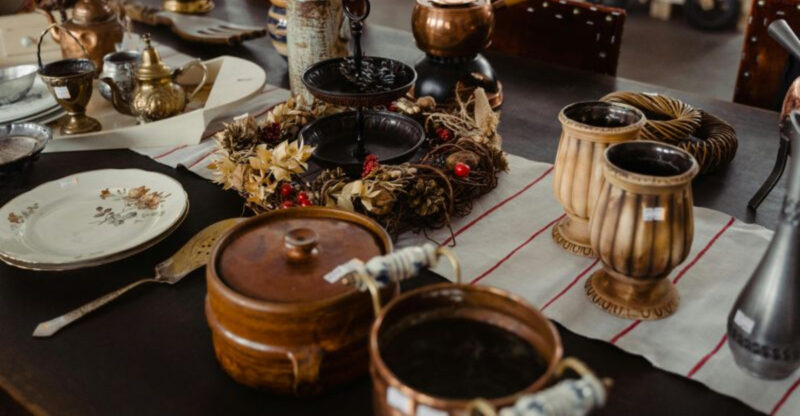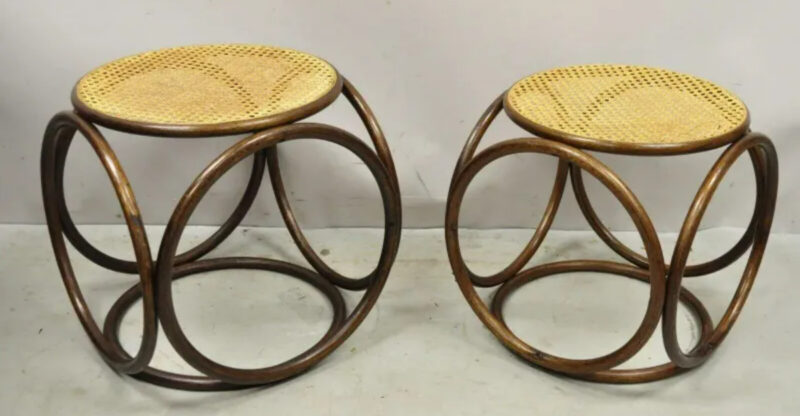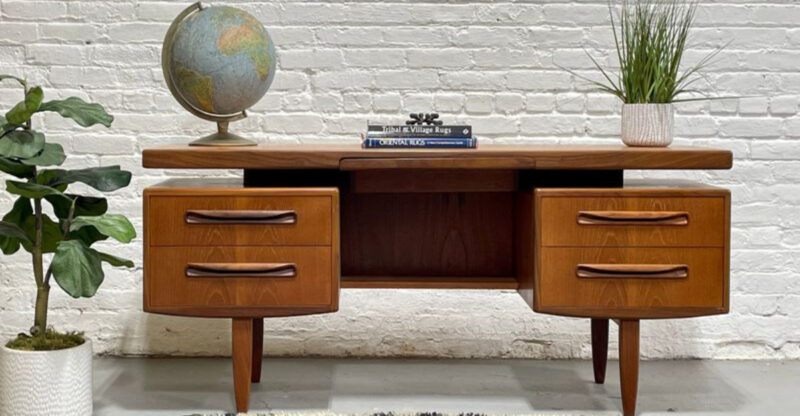17 Priceless Pieces From The 1900s That Iowa Stylists Urge You To Search For
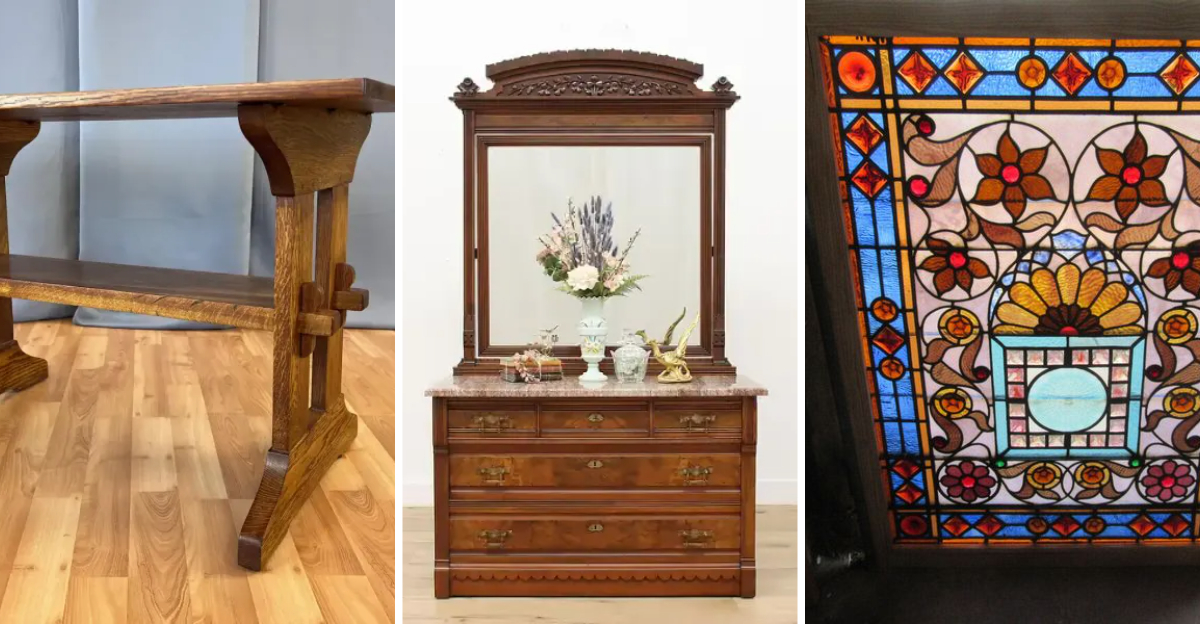
Vintage furniture and decor from the early 1900s has become a hot commodity in the world of interior design.
Iowa stylists have taken notice of these timeless treasures that bring character and history into modern homes.
Whether you’re hunting through estate sales, antique shops, or grandma’s attic, these sought-after pieces can transform your space while potentially becoming valuable investments.
1. Oak Hoosier Cabinets
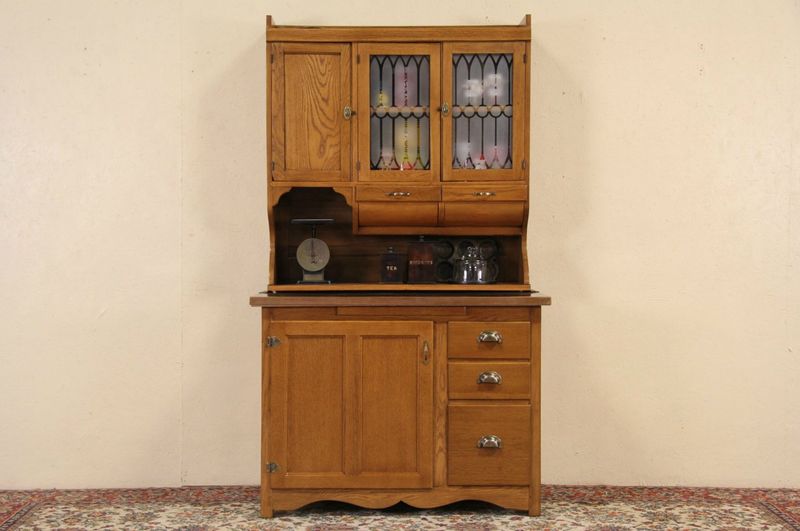
Farmhouse kitchens across Iowa once showcased these ingenious all-in-one kitchen workstations. The beautiful oak cabinets feature pull-out porcelain worktops, built-in flour sifters, and clever storage solutions that modern kitchens still can’t match.
Iowa stylists particularly value original hardware and intact flour bins. Even partial Hoosier cabinets can be repurposed as coffee bars or craft stations, making them versatile for today’s homes.
Many families passed these cabinets down through generations, and finding one with its original recipe cards tucked in the holder is considered especially precious. The warm patina that develops on the oak over decades simply can’t be replicated by modern manufacturers.
2. Art Nouveau Light Fixtures
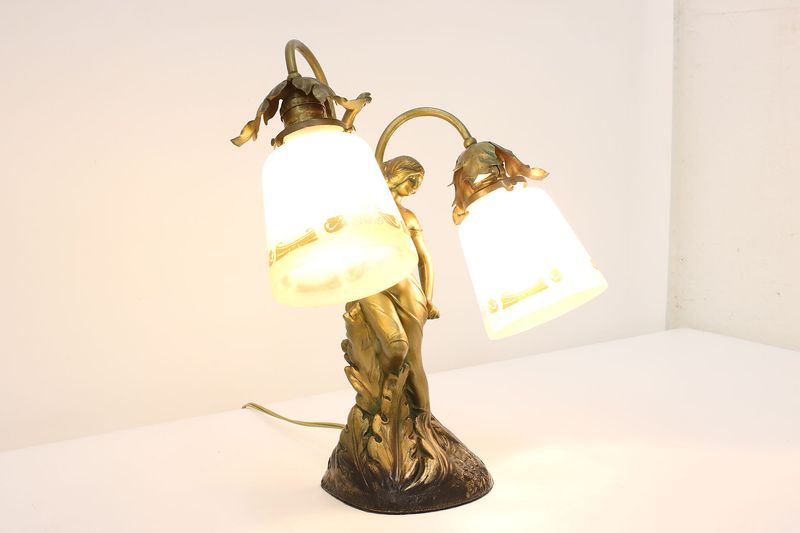
When electric lighting first illuminated Iowa homes, these fixtures transformed interior spaces with their organic, flowing lines and nature-inspired motifs. The sinuous curves and stylized floral patterns capture the essence of the Art Nouveau movement that swept through early 20th-century design.
Many fixtures feature hand-blown glass shades in iridescent colors or stained glass panels depicting dragonflies, peacocks, or lilies. Original brass or bronze hardware often shows a gorgeous natural patina.
Iowa designers recommend checking attics and basements of older homes where these treasures might be stored away. Even damaged fixtures can be rewired by professionals to meet modern safety standards while maintaining their breathtaking artistic impact.
3. Mission-Style Rocking Chairs
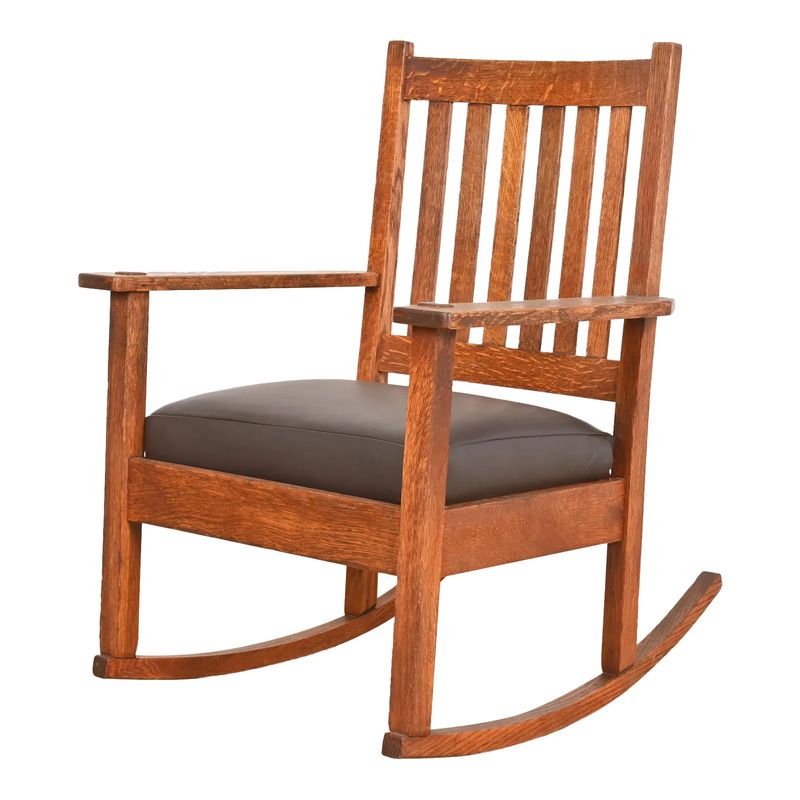
Sturdy, straightforward, and impossibly comfortable that’s the enduring appeal of Mission-style rocking chairs. These iconic pieces showcase the clean lines and honest craftsmanship championed by the Arts and Crafts movement of the early 1900s.
Iowa decorators prize these rockers for their quarter-sawn oak construction that reveals beautiful grain patterns. The mortise-and-tenon joinery has kept these chairs solid for over a century, while leather or canvas sling seats develop a rich patina with age.
Look for maker’s marks from famous craftsmen like Gustav Stickley or the Limbert Company. Even unmarked pieces can be valuable if they show quality construction. These rockers look equally at home in modern farmhouse designs or mid-century inspired spaces.
4. Leaded Glass Windows
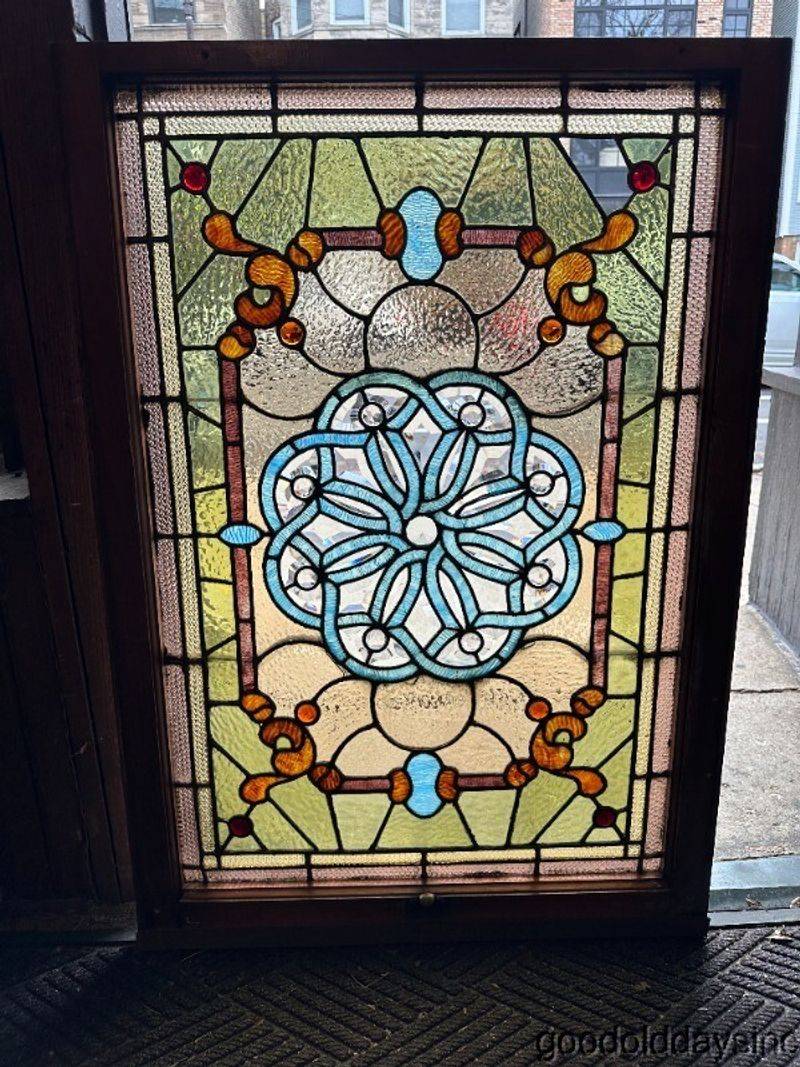
If you’ve ever walked through an old Iowa neighborhood and spotted those gorgeous geometric patterns catching the sunlight, you’ve admired leaded glass windows. These architectural gems feature small glass pieces held together by lead came in stunning designs ranging from simple diamonds to elaborate floral compositions.
Salvaged from historic homes facing demolition, these windows can be repurposed as room dividers, cabinet inserts, or wall art. The wavy, hand-blown glass has subtle imperfections that create magical light patterns impossible to achieve with modern materials.
Iowa designers suggest checking architectural salvage yards or estate sales in historic districts. Even damaged panels can be restored by skilled artisans who specialize in this vanishing craft, preserving a piece of Iowa’s architectural heritage.
5. Clawfoot Bathtubs
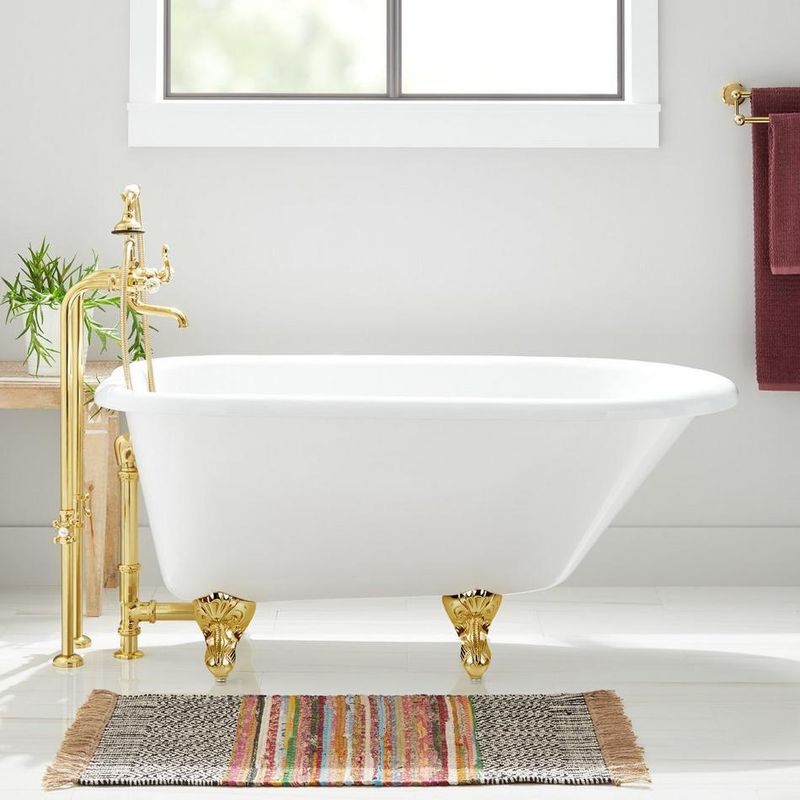
Nothing says luxury quite like sinking into a deep, cast-iron clawfoot tub. These bathroom centerpieces were status symbols in early 1900s Iowa homes, showcasing both wealth and access to modern plumbing.
Most vintage tubs feature ornate eagle or lion claw feet in cast iron, sometimes with gold-painted accents. The porcelain interior remains remarkably durable, often outlasting modern acrylic options by decades.
Iowa decorators recommend checking barns and outbuildings where these heavy fixtures were sometimes stored after bathroom renovations. While restoration may require professional reglazing, the result is a showstopping bathroom focal point. Many homeowners pair these vintage beauties with modern fixtures for a perfect blend of old and new charm.
6. Cast Iron Radiators
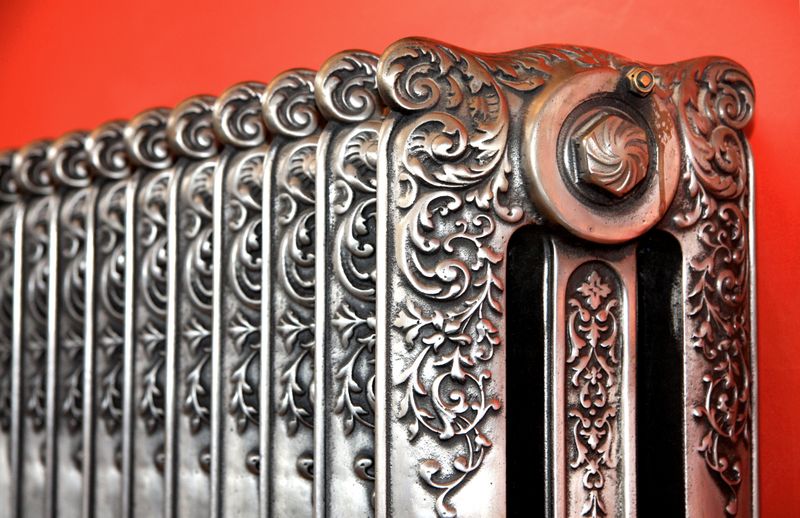
Those heavy, ornate heating units grandma used to dry mittens on are now designer gold. Cast iron radiators from the early 1900s feature intricate Victorian scrollwork and elaborate designs that modern heating systems can’t match.
Iowa stylists love repurposing these vintage pieces as architectural elements, even when disconnected from heating systems. Some creative uses include bench seating (topped with cushions), room dividers, or even outdoor garden features.
Look for radiators with their original nickel-plated valves and intact decorative details. While incredibly heavy, these solid workhorses can last virtually forever with proper care. Many Iowa homeowners are actually reconnecting these efficient heaters to modern systems, appreciating their ability to provide gentle, consistent warmth while adding historic character.
7. Eastlake-Style Dressers
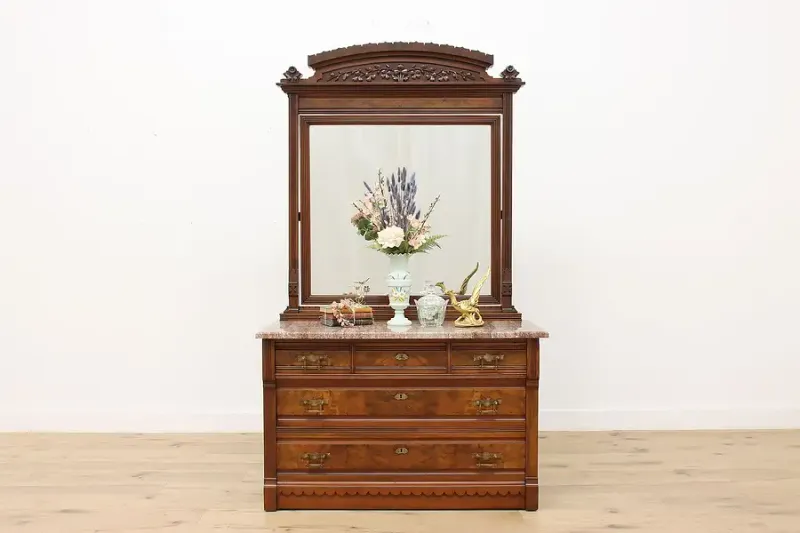
Geometric patterns, incised carvings, and boxy silhouettes define these distinctive bedroom pieces from the late Victorian era. Eastlake dressers reject the overly ornate curves of earlier Victorian furniture in favor of more angular, architectural details.
What makes these pieces special is their innovative construction. Many feature clever storage solutions like hidden compartments or specialized jewelry drawers. The original brass or wooden drawer pulls often showcase star patterns or other geometric motifs.
Iowa decorators recommend checking the backs and bottoms of drawers for maker’s marks or dates. Even pieces with some damage can be worth restoring for their solid construction and unique aesthetic. These dressers make perfect statement pieces in modern bedrooms, offering both practical storage and distinctive historic charm.
8. Handwoven Wool Rugs
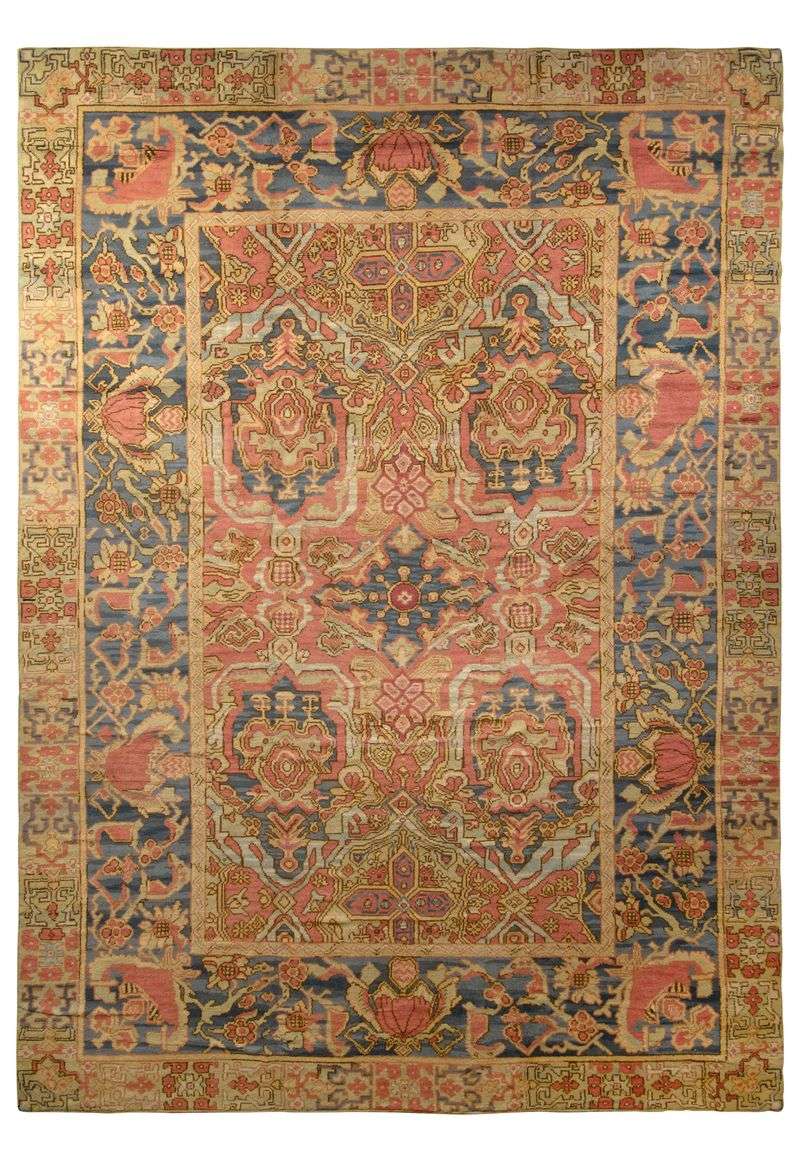
Before mass production took over, Iowa homes were warmed by incredible handwoven wool rugs that told stories through their patterns and colors. These floor coverings feature natural dyes that develop a beautiful patina over time, unlike modern synthetic versions.
Iowa interior designers particularly value Navajo-inspired patterns, Turkish kilims, and Arts and Crafts designs from the early 1900s. The tight weaving and natural wool fibers have allowed these pieces to survive decades of use while only becoming more beautiful.
Check attics, cedar chests, and storage spaces in older homes where these treasures might be tucked away. Even worn rugs can be professionally cleaned and repaired. The natural irregularities and slight variations in handwoven pieces bring warmth and authenticity that machine-made reproductions simply cannot achieve.
9. Ornate Brass Bed Frames
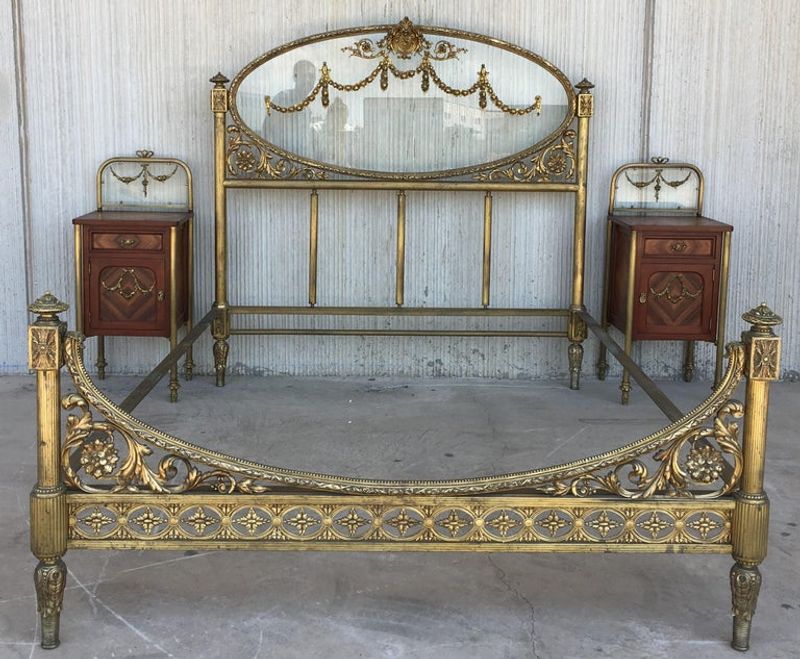
Gleaming brass bed frames with their elaborate finials and intricate detailing were the pride of many Iowa bedrooms in the early 1900s. These substantial pieces often feature hand-cast decorative elements that showcase incredible craftsmanship.
The brass develops a wonderful patina over time, though many Iowa designers now appreciate both polished and naturally aged finishes. Most frames can be adapted to fit modern mattress sizes with simple modifications.
If you discover one of these treasures, check for maker’s marks on the inner rails or corner posts. Companies like Simmons produced many high-quality brass beds during this era. Even partial frames can be repurposed as garden trellises or decorative wall hangings, making them versatile finds for creative homeowners looking to incorporate authentic vintage elements.
10. Quarter-Sawn Oak Buffets
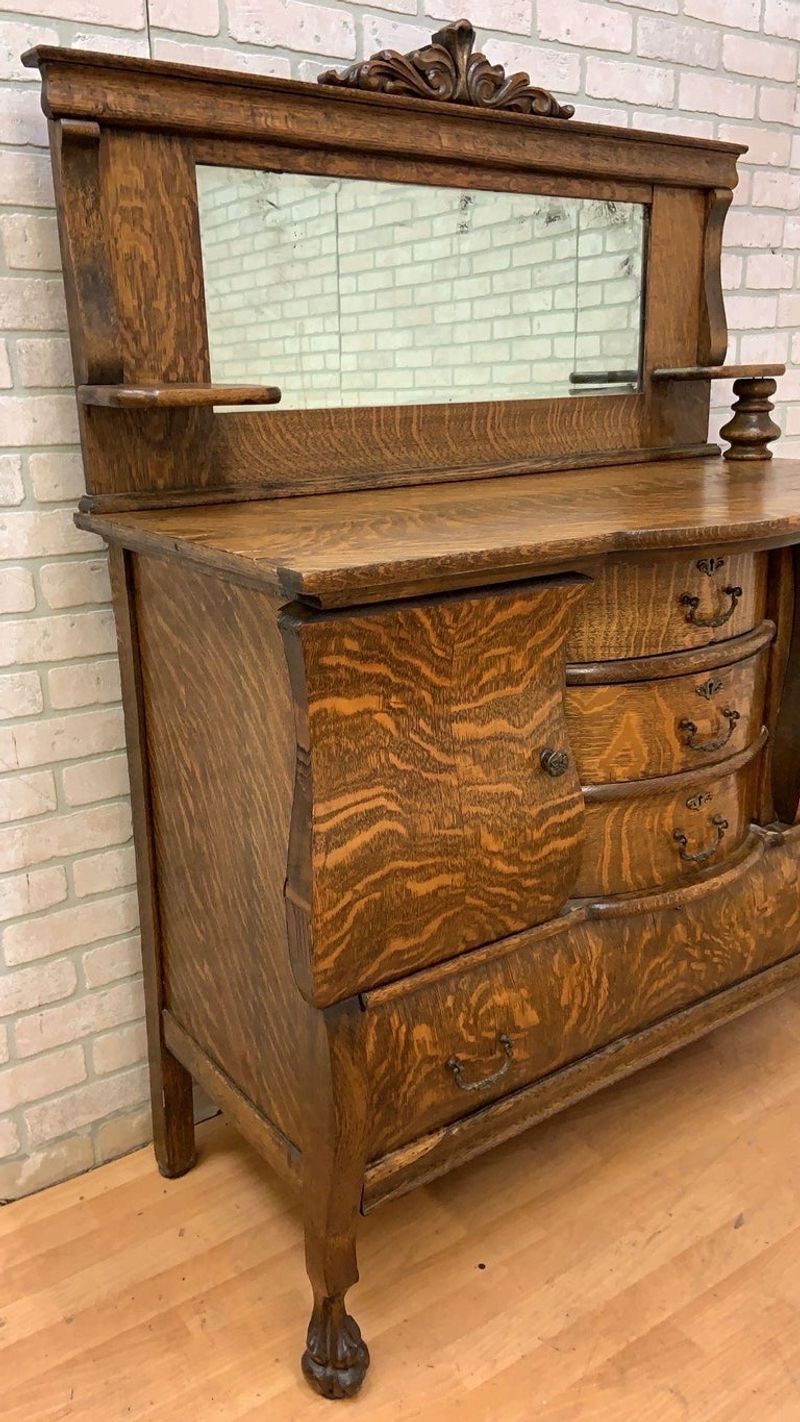
When hosting dinner parties was a cornerstone of social life, these magnificent dining room pieces served as both functional storage and status symbols. Quarter-sawn oak buffets showcase distinctive tiger-stripe or flecked grain patterns that result from special cutting techniques.
Iowa stylists particularly value buffets with original beveled mirrors, leaded glass cabinet doors, and carved details like lion heads or acanthus leaves. Many feature clever serving features like pull-out cutting boards or silver drawers lined with tarnish-resistant fabric.
Though massive in size, these pieces can work in modern homes as entertainment centers, entryway storage, or even kitchen islands with added countertops. The incredible craftsmanship means many have survived over a century of use while maintaining their structural integrity and distinctive beauty.
11. Iron Bed Frames with Porcelain Knobs
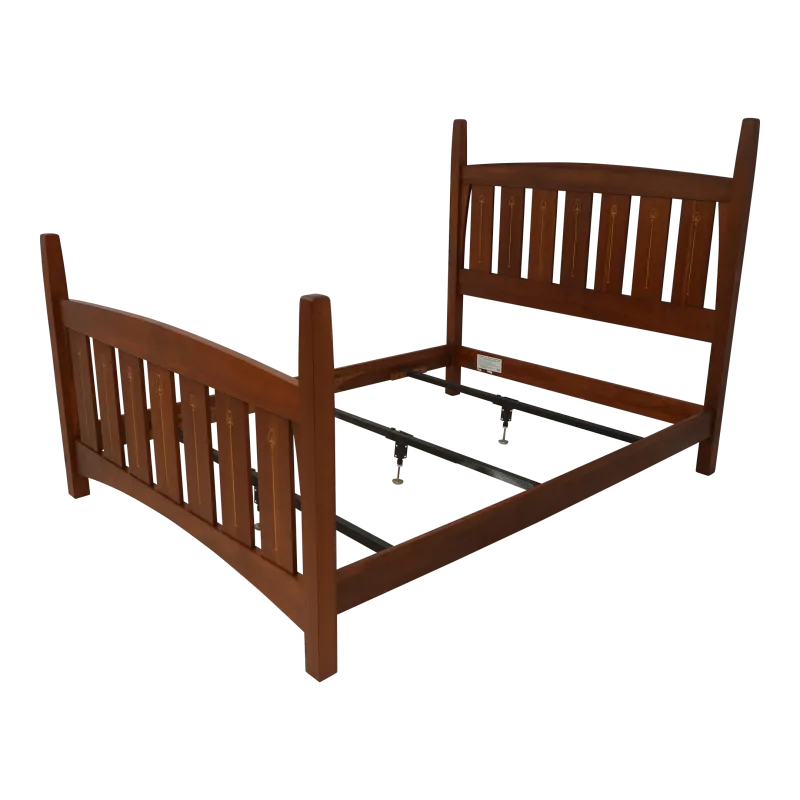
Simpler than their brass counterparts but equally charming, iron bed frames with porcelain knobs capture the essence of early 1900s Iowa farmhouse style. These durable beds often feature white or cream porcelain finials that provide a lovely contrast against the dark iron.
The wrought iron construction has allowed these pieces to survive for generations with minimal maintenance. Many frames can be disassembled and reassembled, making them surprisingly practical for today’s mobile lifestyle.
Iowa designers recommend checking for original paint layers or hand-forged details that indicate earlier craftsmanship. The twin-sized versions are particularly sought after for guest rooms or children’s spaces. Unlike flimsy modern bed frames, these substantial pieces anchor a room with their authentic character while providing rock-solid support for modern mattresses.
12. Carved Oak Sideboards
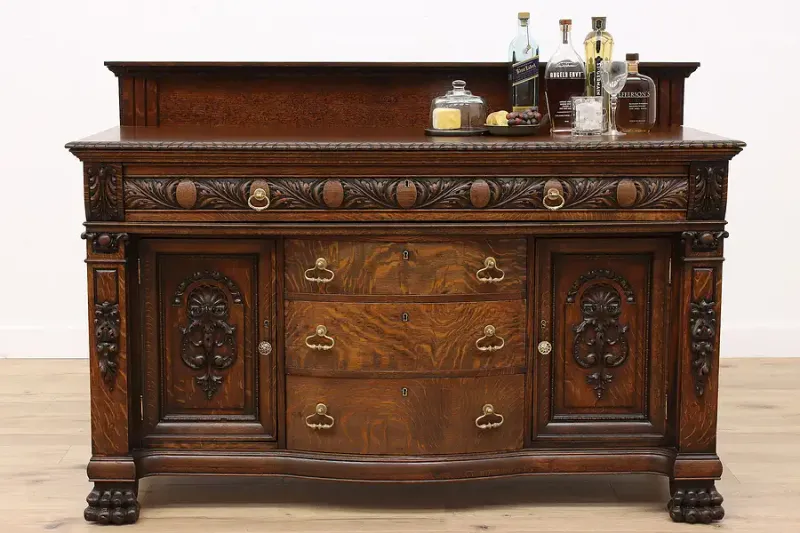
These magnificent dining room companions stood tall in Iowa homes, showcasing incredible hand-carved details that modern furniture simply can’t replicate. The deeply carved hunt scenes, fruit motifs, or mythological figures represent countless hours of skilled craftsmanship.
Most sideboards feature practical storage with multiple drawers for linens and flatware, plus cabinets for serving pieces. The top provided generous space for displaying food during large family gatherings or holiday meals.
Iowa decorators suggest looking for pieces with original hardware and intact carvings. Even those needing refinishing can be worthwhile investments due to their solid construction. While traditionally used in dining rooms, these versatile pieces now appear in entryways, living rooms, or even as bathroom vanities when fitted with sinks, bringing their historical presence into unexpected spaces.
13. Stained Glass Transom Windows
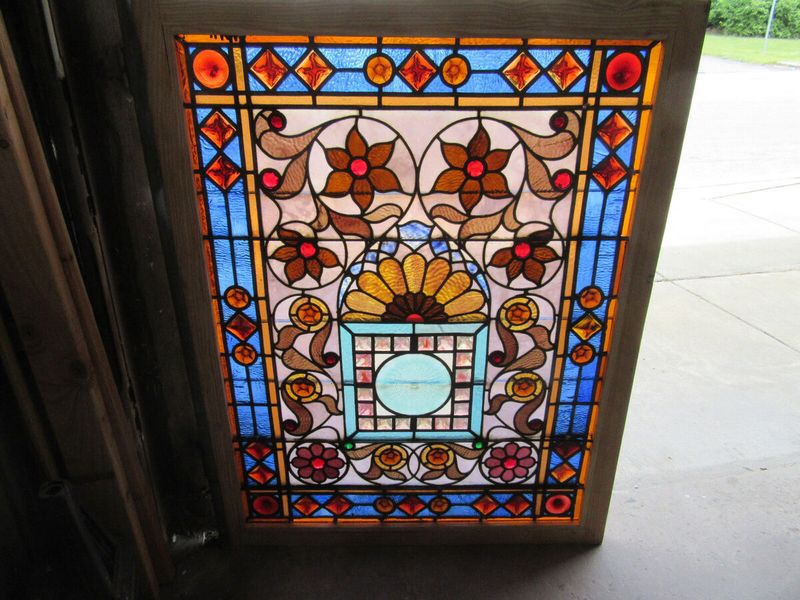
Hidden above doorways in many historic Iowa homes, these colorful architectural elements once provided ventilation while maintaining privacy. Transom windows feature stunning stained glass designs ranging from simple geometric patterns to elaborate floral compositions.
The jewel-toned glass creates magical light patterns as sunshine streams through, casting colorful shadows that change throughout the day. Many feature hand-painted details or unusual glass techniques like drapery glass or rippled textures.
Iowa designers recommend repurposing these windows as wall hangings, room dividers, or even cabinet inserts if they’re no longer needed in their original locations. Check salvage yards specializing in architectural elements from demolished historic buildings. Even smaller pieces can be incorporated into modern lighting fixtures or decorative panels, bringing a touch of Iowa’s architectural history into contemporary spaces.
14. Parlor Stoves
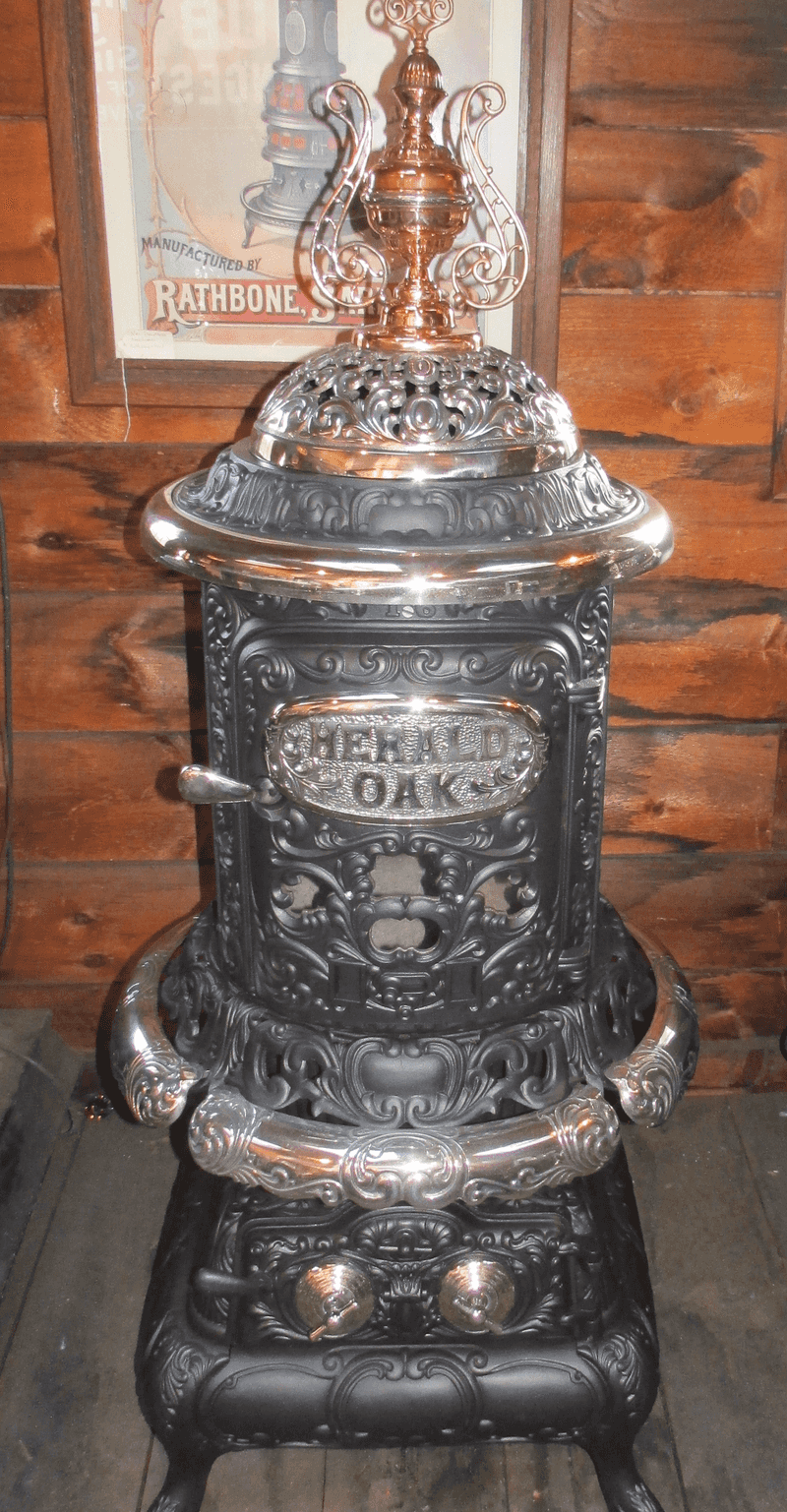
Before central heating, these ornate cast iron beauties kept Iowa families warm while serving as decorative focal points. Parlor stoves from the early 1900s feature elaborate nickel trim, mica windows that allowed the fire’s glow to shine through, and detailed castings of classical figures or nature scenes.
Many Iowa homes had these stoves disconnected but preserved as decorative elements when modern heating was installed. The intricate designs and substantial presence make them conversation pieces in today’s homes.
Look for maker’s marks from companies like Majestic or Round Oak on the doors or back panels. While some collectors restore these stoves to working condition, many are valued purely for their sculptural quality and historical significance. Their detailed craftsmanship represents an era when even utilitarian objects were designed with beauty in mind.
15. Arts and Crafts Movement Tables
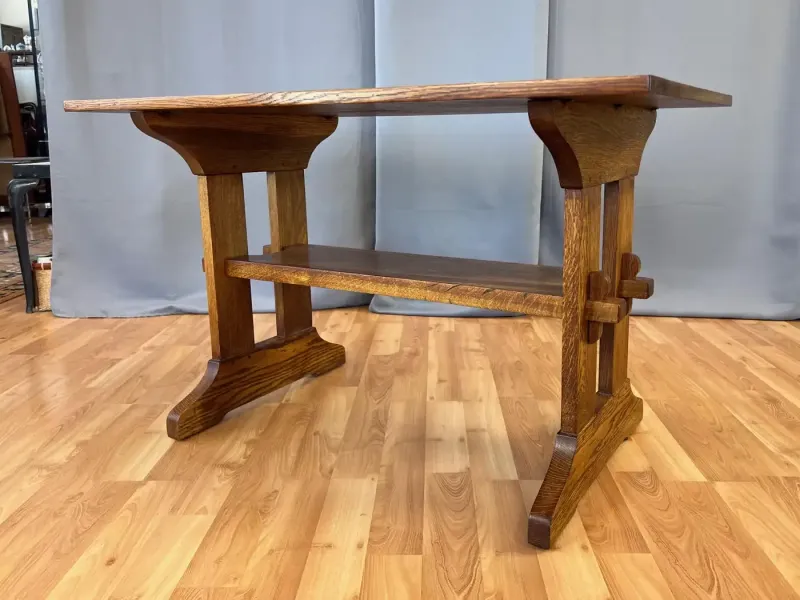
Honest construction and clean lines define these iconic tables that rebelled against Victorian excess. The Arts and Crafts movement celebrated visible joinery, natural materials, and functional beauty – principles that Iowa stylists find incredibly relevant to today’s design sensibilities.
The tables typically feature quarter-sawn oak with distinctive grain patterns, exposed tenons, and minimal ornamentation beyond the beauty of the wood itself. Many include unique design elements like adjustable tops, built-in bookracks, or specialized compartments.
Check for maker’s marks from famous workshops like Stickley, Limbert, or Roycroft stamped underneath. Even unmarked pieces can be valuable if they show quality craftsmanship. These versatile tables work beautifully in modern homes, complementing both contemporary and traditional décor while providing practical surfaces that have already proven their durability over more than a century.
16. Victorian Mantel Mirrors
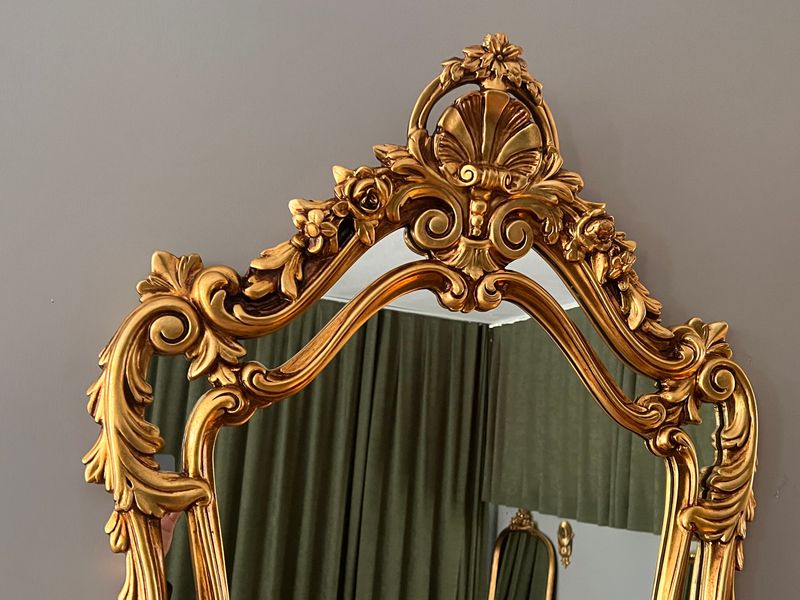
Towering above fireplace mantels, these magnificent mirrors brought light and grandeur to Iowa parlors of the early 1900s. The ornate frames often feature hand-carved details including flowers, scrollwork, or classical figures gilded with gold leaf.
The mirror glass itself holds special value, as many contain original silvering with a distinctive patina that modern reproductions cannot match. Some feature divided sections or beveled edges that create beautiful light reflections.
Iowa designers suggest looking beyond damaged gilding or minor frame issues to the overall proportions and craftsmanship. These mirrors can transform contemporary spaces by creating the illusion of higher ceilings and additional light. Though traditionally used above fireplaces, these versatile pieces now appear in entryways, dining rooms, or as dramatic headboards, bringing a touch of Victorian opulence to modern interiors.
17. Antique Marble-Top Washstands
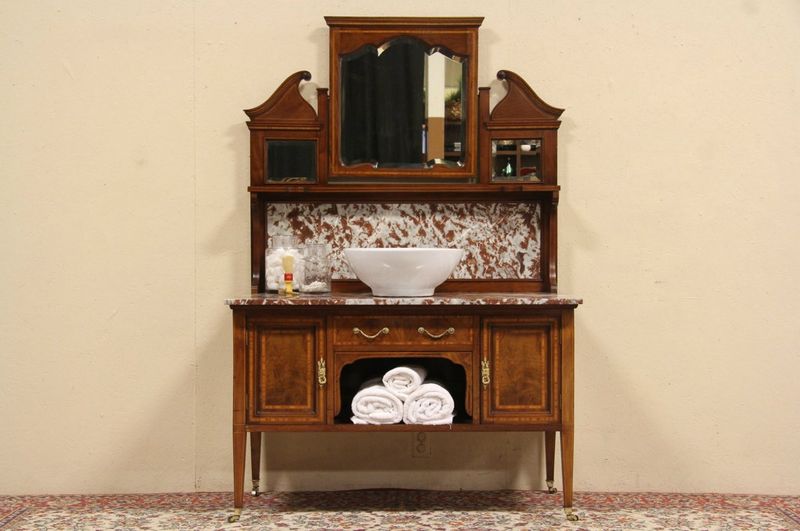
Before indoor plumbing became commonplace, these elegant bedroom pieces held washbasins and pitchers for daily grooming. Marble-top washstands feature beautiful stone surfaces that have withstood decades of use while developing unique patinas.
The wooden bases often showcase detailed carvings, towel bars, and small drawers for grooming implements. Most feature backsplashes to protect walls from water splashes, and some include original ceramic knobs or brass hardware.
Iowa interior designers have reimagined these versatile pieces as bathroom vanities, bar carts, entryway tables, or nightstands. The marble tops are naturally waterproof and surprisingly durable. When shopping, examine the marble for cracks (hairline fractures are common and acceptable) and check that drawers operate smoothly. These functional pieces of history bring character to modern homes while telling stories of daily life from a bygone era.

